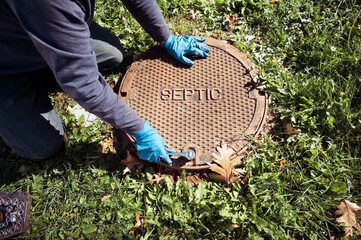Clean systems start where most people never look. Septic pumping is one of those quiet necessities that keeps everything running smoothly without ever demanding attention. It exists beneath the surface, hidden from view, yet it safeguards hygiene, comfort, and even property value. The world above relies entirely on the efficiency of the world below.

Modern life produces waste faster than we realize. Every flush, rinse, and drain contributes to a system that must be managed with precision. A septic tank becomes the heart of this process, separating, filtering, and breaking down what we discard. But without timely care, even the most well-built system can falter. Visit https://septic-guys.com/ to learn more.
Septic pumping is not just maintenance—it’s prevention. It removes the buildup that naturally accumulates over time, keeping the system from clogging or backing up. Without this intervention, waste that should stay contained may find its way back into daily life, creating both health hazards and costly damage.
Many homeowners forget that septic systems have a lifespan shaped by usage and upkeep. Regular pumping extends that life, ensuring that the balance within the tank remains intact. Solids settle at the bottom, scum floats to the top, and between them lies the liquid layer that flows to the drain field. Removing excess layers keeps this delicate ecosystem functioning as intended.
A well-timed pumping schedule depends on several factors. The size of the tank, the number of occupants, and water usage patterns all play a role. Too much delay allows solids to enter the drainage area, causing irreversible clogs. Too frequent cleaning, however, may disrupt natural bacterial processes that help decompose waste. Balance is key.
People often underestimate the science behind septic systems. Within that underground chamber, natural bacteria perform constant work, digesting organic matter and reducing waste volume. When solids grow beyond what bacteria can handle, pumping becomes necessary to reset the system’s equilibrium. It’s a cycle of renewal, unseen but essential.
Technological advances have made septic pumping cleaner, faster, and safer. Vacuum pumps and sealed containment ensure that waste is removed efficiently without exposing the surroundings to contamination. Modern equipment can even assess tank levels and detect leaks before they cause major problems.
Inspection goes hand in hand with pumping. Professionals use the opportunity to evaluate tank condition, look for cracks, check baffles, and assess sludge depth. These observations reveal how well the system performs and what preventive steps might be needed. A single inspection can avert years of future trouble.
Neglecting septic pumping is not just a matter of inconvenience—it’s a threat to health and environment. Overflow or leaks can release pathogens into soil and groundwater. The resulting contamination can harm vegetation, water sources, and even nearby living spaces. Maintaining the system is an act of protection for the ecosystem as much as for the household.
Proper education about septic systems is often overlooked. Many users assume that out of sight means out of mind, but awareness creates responsibility. Understanding how everyday actions affect the tank—like excessive use of chemicals or water—helps sustain its performance. Pumping complements this awareness by keeping the physical system aligned with good habits.
The rhythm of septic care is steady and predictable when monitored correctly. Most systems require pumping every few years, though some need it more often based on demand. Establishing a routine builds peace of mind and prevents the panic of unexpected backups. Consistency is the unsung hero of maintenance.
There’s also an environmental perspective in timely pumping. A well-maintained septic system prevents untreated wastewater from seeping into the ground. It protects aquatic life and ensures that the soil continues to act as a natural filter. What seems like a simple household task actually contributes to broader ecological health.
Many experts describe septic pumping as a form of cleansing. Just as the human body expels waste to stay healthy, so must our living systems. Ignoring that function results in toxicity and imbalance. Regular maintenance keeps the flow of life—both literal and symbolic—uninterrupted.
The process itself is straightforward but requires skill. A technician locates the access points, measures sludge and scum layers, and uses specialized equipment to extract the waste. After pumping, the tank is checked for backflow, leaks, and any damage. Documentation of these details creates a record that helps plan future servicing.
Every property with a septic system has its own rhythm. High water usage homes may require more frequent attention, while smaller households can extend intervals. But no matter the setting, the principle remains: delay leads to decay. A few hours of pumping can prevent years of repair.
There’s an art in knowing when to act. Slow drains, unpleasant odors, or soggy ground above the tank are early warnings. These subtle signs indicate that layers inside have grown too thick. Responding early prevents expensive interventions later.
Even new homeowners benefit from immediate evaluation. It’s common to inherit systems without maintenance records, leaving hidden risks below the surface. A single pumping session reveals the tank’s health and offers a clean start for responsible ownership.
Proper waste disposal habits support the system’s longevity. Flushing non-biodegradable materials or pouring grease into drains disrupts bacterial activity. Over time, these mistakes lead to blockages that no pumping schedule can fix alone. Respecting the system is part of preserving it.
Water conservation also plays a major role. The less strain placed on the septic tank, the more efficiently it performs. Fixing leaks, using efficient fixtures, and spacing out laundry loads all reduce pressure on the system. Pumping becomes more effective when supported by these daily habits.
A hidden beauty exists in septic systems. They represent a quiet harmony between human design and natural biology. Bacteria, gravity, and filtration work together to process what we discard. Septic pumping keeps this harmony alive, renewing the space where waste transforms back into safety.
Modern environmental awareness has changed how people view septic maintenance. It’s no longer just about preventing clogs but about sustainability. Clean water, fertile soil, and public health depend on responsible waste management. Septic pumping stands at the crossroads of these values.
In rural areas, where centralized sewer systems don’t exist, septic pumping takes on even greater importance. It supports self-sufficiency and independence while maintaining community hygiene. Each properly serviced tank becomes part of a network of protection for all who share the land.
For businesses that rely on septic systems, pumping ensures compliance with regulations and continuity of operations. Overflow or system failure can disrupt productivity and reputation. Investing in maintenance keeps everything functioning without interruption.
The future of septic technology points toward smarter monitoring. Sensors now track waste levels and send alerts when pumping is due. These innovations make it easier to manage maintenance without relying on guesswork. The combination of human expertise and digital insight promises cleaner and more efficient systems.
Despite technology, human expertise remains vital. Skilled technicians understand the subtle signs of wear, the smell of imbalance, the sound of flow. Their experience turns a simple task into a craft of precision. Behind every clean drain lies the work of unseen hands maintaining equilibrium.
Pumping frequency may seem routine, but it embodies the principle of stewardship. Caring for what’s hidden shows respect for both property and environment. It reminds us that true cleanliness extends beyond what meets the eye.
Those who schedule regular pumping often enjoy fewer repairs, cleaner surroundings, and better property value. A neglected system, by contrast, can bring financial and emotional stress. Prevention always costs less than restoration.
The materials removed during pumping undergo proper treatment before disposal. They are processed to ensure that no harmful elements reenter the environment. This responsible cycle completes the circle of care that begins with the household and ends with the ecosystem.
The odors often associated with septic systems come from imbalance, not normal function. A well-maintained tank operates quietly and without smell. Pumping restores that equilibrium, transforming discomfort into reassurance.
Education and awareness campaigns continue to emphasize the importance of septic management. Communities that encourage regular pumping see fewer cases of contamination and system failure. Shared responsibility leads to shared cleanliness.
Those who experience a properly functioning system rarely think about it again. That’s the beauty of septic maintenance—it works best when invisible. The absence of trouble is the proof of success. Pumping simply preserves that quiet peace.
Even in emergencies, quick action and professional care can restore balance. Severe blockages or overflows often trace back to long-neglected tanks. After pumping, systems regain stability, and households rediscover comfort.
Pumping also allows opportunities for upgrades. Technicians can recommend improved filters, risers, or inspection ports that make future maintenance easier. Investing once can simplify care for years ahead.
Though often dismissed as unglamorous, septic pumping reflects a deeper philosophy—responsibility to what lies unseen. It connects cleanliness, health, and sustainability into a single act. Beneath every home, there’s a living system that deserves respect.
The next time you turn on a faucet or flush a toilet, remember the silent machinery working below. Its quiet service keeps the modern world clean and functional. Septic pumping ensures that service continues, uninterrupted, reliable, and invisible.
In the end, septic pumping is not just about waste removal. It is a story of rhythm, renewal, and responsibility. It’s about tending to what we rarely see but always rely upon. Beneath every surface, the pulse of sanitation continues—steady, vital, and unseen.
